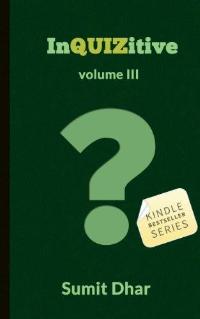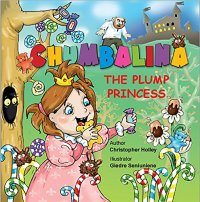Third volume of the Kindle Bestseller series and one of Amazon’s Top Rated quiz books
With over 75 five star ratings, the InQUIZitive series features quizzes that will give you multiple “Aha!” moments. Each question in this series has been selected with utmost care and the book features trivia not seen in any of the other books. This is an ideal book for party games, family get-togethers and long drives with your family. Add this book to your cart now and impress your friends with trivia that is truly unique.
Limited Time Offer: Buy one, get one free
See inside the book for details or contact the author at sumit.dhar@gmail.com
Praise for the InQUIZItive Series
– Best concept in a trivia book I’ve ever seen.
– InQUIZitive is extremely infectious!
– Trivia at its best in this written format.
– InQUIZitive series offers a great collection of good trivia questions that will be fun for almost audiences and formats.
– Fascinating questions with answers that will very enjoyably expand your knowledge.
Sample Questions
Q1. Back in the 1700s, many European banks issued porcelain tiles called borrower’s tiles to their clients. These tiles were imprinted with the borrower’s name and credit limit. Each time the customer wanted to borrow money, he had to present the tile to the bank teller, who would compare the imprinted credit limit with how much the customer had already borrowed. If the borrower were past the limit, the teller did something to the tile on the spot. What did the teller do and what word originated as result?
Q2. In 18th century, mutiny was a serious offense and the ring leader was usually executed. As a result, when petitioning someone in authority, the complainants signed their name in a circle. This was done to disguise who had signed first and to prevent anyone from being identified as the ring leader. What term, popular in sports, derives from this practice of signing in a circle?
Q3. In classical times, traders across regions carried the fruit of carob tree. This fruit had a unique property; its weight was remarkably consistent. Buying and selling of a particular metal in classical times relied extensively on the carob seeds. Which unit of measurement is derived from the carob seeds?
Answers:
1. The teller broke the tile. Hence, someone who has no money today is called broke.
2. Round Robin
3. Carat; the unit of measurement of purity of gold. 24 carob seeds were considered equal to one solidus (a pure gold coin). If there was a variation, it clearly meant that the solidus was not 100% gold. Even today, pure gold is called 24 carat.
Get your copy right away












